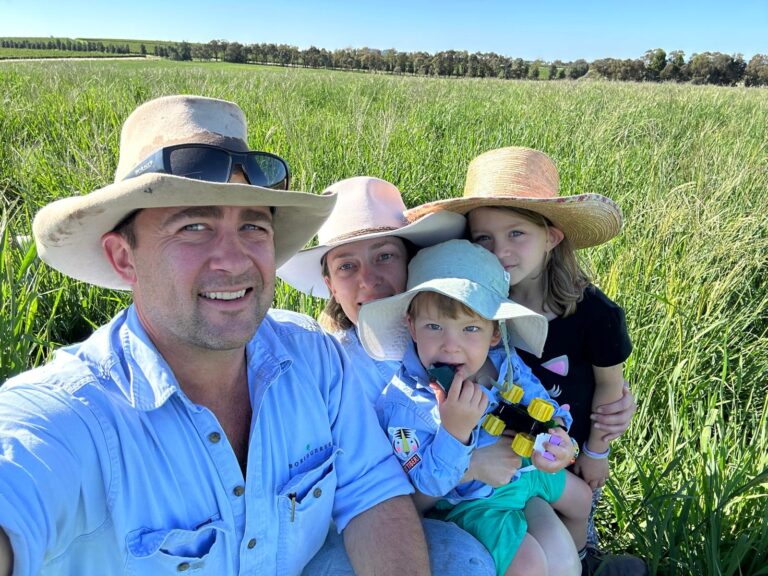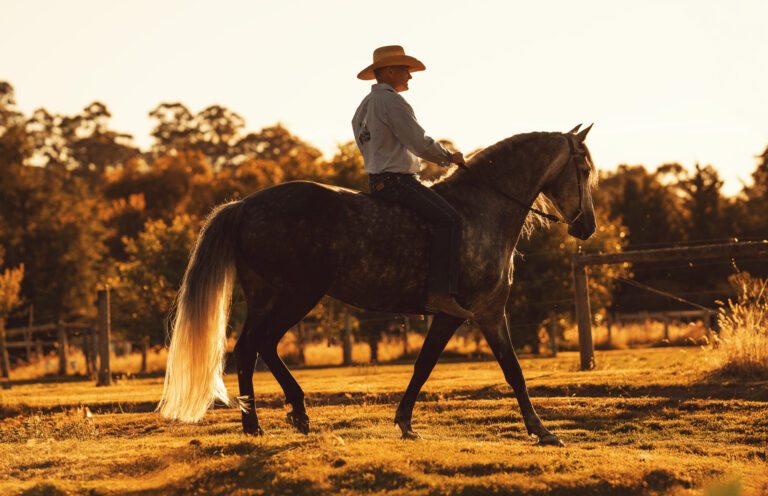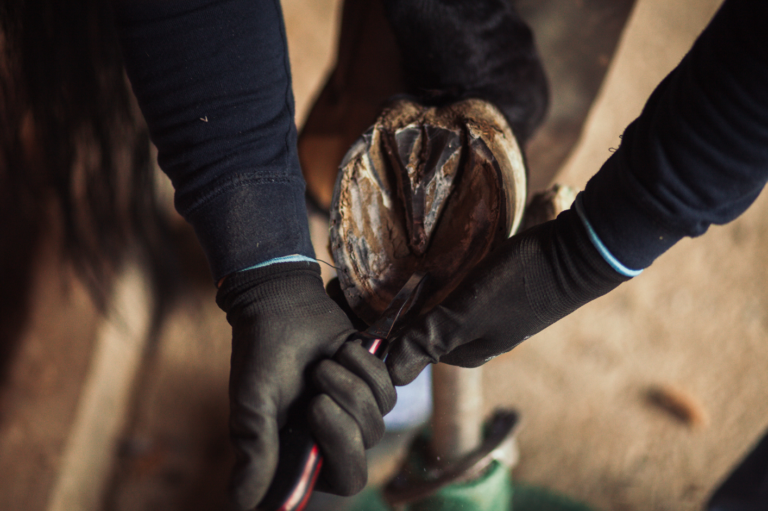Equine Physiotherapy
by Kate Sagar B. App. Sci. (Physio) M. Anim. St. (Physio)
THE STIFF HORSE: PART TWO
In follow up to my previous article on the ‘stiff horse’, I will now focus on the most common areas of stiffness and ways in which you can help them. This article will look at the common areas of stiffness in the neck and fore limb. In many cases, you as the horses’ owner can treat these areas successfully at home. Simple stretching techniques and range of movement exercises can be used to improve your horses’ flexibility.
THE POLL It is common for horses to lose the range of movement available at the poll. This is especially common in older horses, where the joint between the first vertebrae and the head becomes arthritic and stiff. This joint is only able to perform a relatively small ‘nodding’ type movement, so a slight restriction to this movement can lead to big problem for your horse. Meaning he has to compensate by lowering or raising his entire neck rather than simply nodding at the poll. Older horses often develop a nose poking posture due to arthritic changes, meaning they can no longer flex their head inwards towards their chest. This is also common in stallions, who often adopt a similar head posture when serving mares or as part of their ‘presence’. If postures are maintained for long periods it can lead to the muscles and soft tissue shortening, which in turn restricts movement, again reducing the amount of flexion at the poll. Less common is a loss of movement the other way, i.e. not able to poke its nose out. Although this restriction can occur in horses that ‘wind suck’, as they over work the muscles on the under side of their necks, which can in turn get tight.
Image right: Flexion or nodding of the poll
HOME EXERCISE: With a carrot you can encourage the horse to tuck his nose in towards his chest, as in a nodding type movement or you can manually do this with your hand on his nose. There is only a small amount of movement available so aim for a small localised nod.
Image right: Extension or nose poking at the poll
HOME EXERCISE: Manually lift the head out from under the jaw, or stand in front and aim for the same movement with a carrot.
Training techniques may have to be modified if your horse has a permanent restriction at the poll. You may have to adopt a lower or higher head carriage to compensate for the increased or decreased angle at the poll.
THE NECK Side flexion or bending of the neck seems to be the most common movement to get stiff. The seven vertebrae of the neck all have key roles to play, in enabling the neck to bend sideways. The majority of side flexion, which occurs in combination with rotation, takes place at the 3rd, 4th and 5th vertebrae. If the horse gets stiff in this area he will try to trick by tilting his head or lunging from the base of his neck, in order to reach all the way around (as in turning to touch the rider’s toe). The lower border of the neck may develop a thickened appearance, especially through the middle section as this area is not working normally.
Image right: Side flexion of the neck: The triangle shows where the majority of movement should occur.
HOME EXERCISE: Standing at the horse’s shoulder, you can ask the horse to bend around towards you to reach a carrot or sometimes if you tickle them on the brand area they will bend around to that point. Watch that he doesn’t tilt from behind the poll area; the movement should create an even curve with lots of bend through the middle of the neck. This exercise is best done on the ground rather than in the saddle as you can control where the bend is happening. When done on the horse it tends to encourage tilting of the head and movement at the second vertebrae.
THE KNEE Loss of flexion of the knee region is very common; this is usually related to arthritis of the joint. It is common in older horses, but sadly often occurs in young ex race horses, with a history of knee problems. The knee may develop soft or hard lumps on the front surface which is generally a sign that arthritis is present. Knee stiffness can cause the horse to trip and can be very dangerous if severe loss of movement has occurred. Horses with advanced knee stiffness should only be ridden on soft arena surfaces, which allow them to drag their toes without tripping. Squaring the toes or using natural balance shoes can also help and these horses should not be asked to jump. Another cause of knee stiffness is severe scarring on the fronts of the knees, caused by the horse falling onto his knees on a hard surface. If exercises are not carried out during the healing process the resultant scar tissue will contract and lead to severe loss of movement. Good results can be achieved with simple range of movement exercises, assuming that no pain is present on flexion. Pain on knee flexion may indicate temporary inflammation as in an acute strain, or a more serious degenerative joint. Either case requires veterinary consultation.
Image right: Knee flexion: The forearm and cannon should touch without discomfort to the horse.
HOME EXERCISE:
Knee stiffness can be improved by simply bending the knee up and down. If the horse has any pain with this movement cease the exercise and consult your vet.
These exercises can be made more functional by asking the horse to step over obstacles, forcing him to bend his knee.
In the next article I will cover common areas of stiffness in the back and hind limb.









